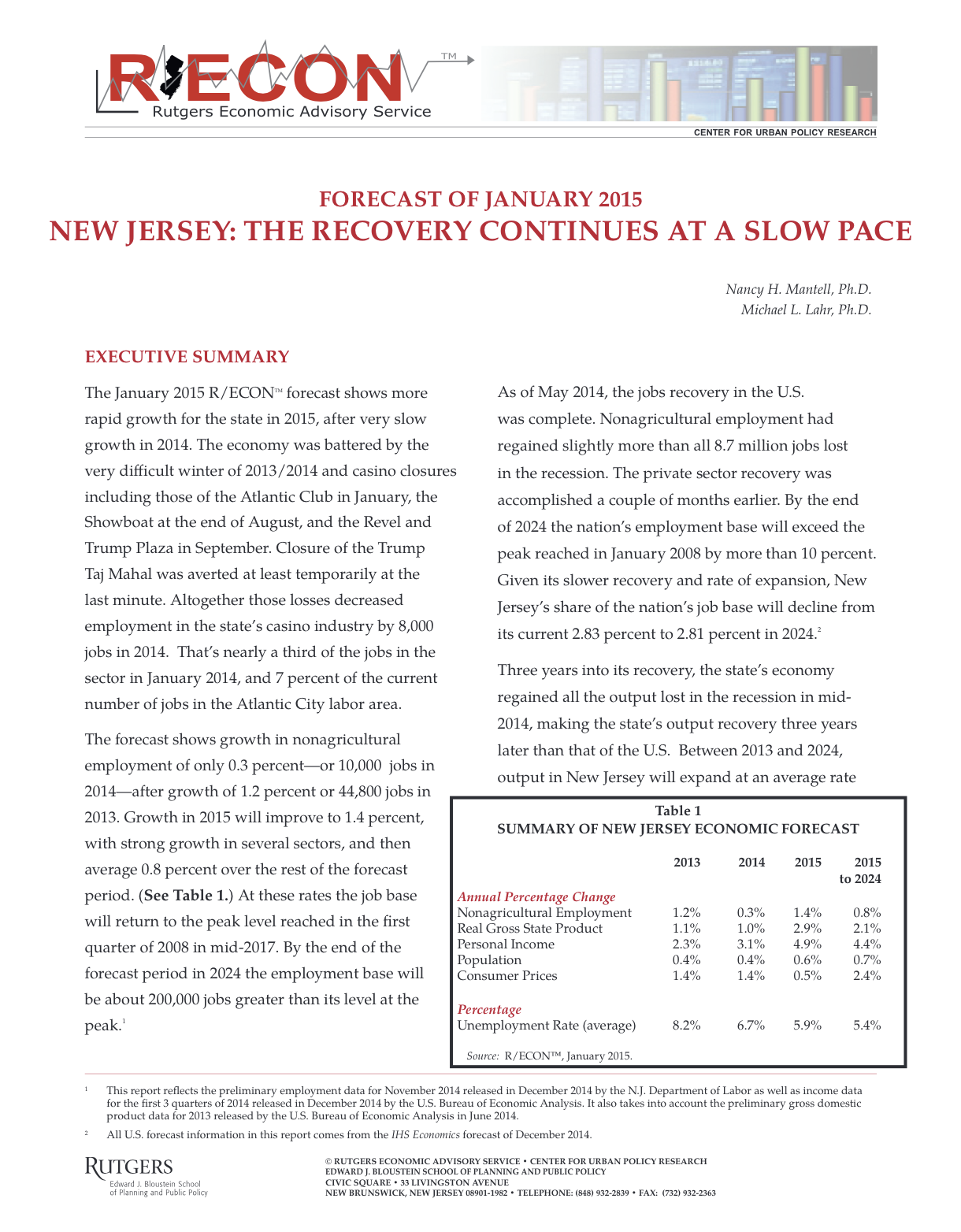The January 2015 R/ECON forecast shows more rapid growth for the state in 2015, after very slow growth in 2014. The economy was battered by the very difficult winter of 2013/2014 and casino closures including those of the Atlantic Club in January, the Showboat at the end of August, and the Revel and Trump Plaza in September. Closure of the Trump Taj Mahal was averted at least temporarily at the last minute. Altogether those losses decreased employment in the state’s casino industry by 8,000 jobs in 2014. That’s nearly a third of the jobs in the sector in January 2014, and 7 percent of the current number of jobs in the Atlantic City labor area.
The forecast shows growth in nonagricultural employment of only 0.3 percent—or 10,000 jobs in 2014—after growth of 1.2 percent or 44,800 jobs in 2013. Growth in 2015 will improve to 1.4 percent, with strong growth in several sectors, and then average 0.8 percent over the rest of the forecast period. (see table 1.) At these rates the job base will return to the peak level reached in the first quarter of 2008 in mid-2017. By the end of the forecast period in 2024 the employment base will be about 200,000 jobs greater than its level at the peak.
As of May 2014, the jobs recovery in the U.S. was complete. Nonagricultural employment had regained slightly more than all 8.7 million jobs lost in the recession. The private sector recovery was accomplished a couple of months earlier. By the end of 2024 the nation’s employment base will exceed the peak reached in January 2008 by more than 10 percent. Given its slower recovery and rate of expansion, New Jersey’s share of the nation’s job base will decline from its current 2.83 percent to 2.81 percent in 2024.
